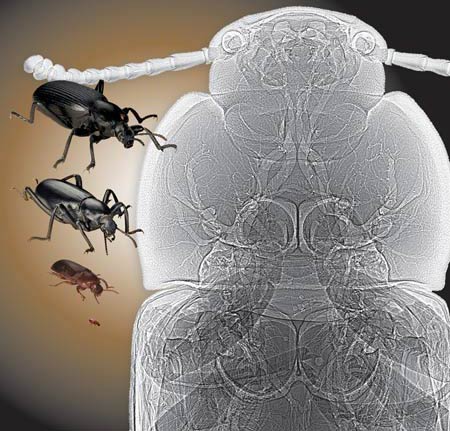Today's insects are small due to less oxygen
Phoenix
Millions of years ago, giant insects had swept across the earth, but only after a while, they disappeared. Scientists don't know why they only have a small descendant today, until a recent discovery.
At the end of the Paleozoic era, the amount of oxygen in the atmosphere rose to a record, making some insects evolve and become huge. As the oxygen content drops, giant insects also disappear.
The cause of this huge development is thought to be due to insect respiratory system. Unlike vertebrates, blood transports oxygen from the lungs to cells, insects distribute oxygen directly through the network of tracheal tubes. With large insects, this type of oxygen transport becomes less effective, but if the atmospheric oxygen content increases as has happened at the end of the Paleozoic era, longer tracheal tubes may be useful. This makes the insects evolve and reach larger, even giant body sizes.
Recent research has shown: The limitations of body size of beetles stem from tracheal tubes in their legs.

Insects today are smaller than insects millions of years ago
(Photo: Argonne National Laboratory / LiveScience)
A scientific group of Argonne's Photon Source Institute (APS), Midwestern University and Arizona State University analyzed detailed X-ray images of four beetle species to find out how their tracheal system has changed. when body size increases.
In general, they found that: large beetles use a large part of their bodies to make room for the trachea tubes compared to smaller species.
The group is particularly interested in the direction of the trachea from the center of the body to the top of the head and to the legs. They argue that these lines may be ' bottlenecks ', limiting the amount of oxygen that can be distributed to parts.
They surveyed the trachea size of four species of beetles, to see from which can predict the largest size of living species. If based on the data of the first part, it can only be guessed that it is a beetle with long legs, and is unclear about body size, but if based and data from the foot, then can accurately predict a beetle that matches the size of the largest living beetle - Titaneus giganteus .
'This study is the first step in understanding how to control insect's body size'. Jake Socha - Argonne biologist, said.

The trachea tube runs through the body of the beetle (Photo: LiveScience)
- Insects will grow huge if the earth has plenty of oxygen
- Watching insects 'monster monsters'
- Are people about to live without breathing?
- How to handle when insects get into their ears
- More than 1 million species of insects on Earth but this is the reason they are
- Interesting secrets about oxygen
- Why insects are not as big as people?
- Oxygen appeared early on Earth
- Strange insects attack sweet potatoes
- Giants in the insect world
- Where does the oxygen for the oxygen mask really come from?
- Video: What happens if the Earth loses oxygen in 5 seconds?
 Why do potatoes have eyes?
Why do potatoes have eyes? 'Tragedy' the world's largest carnivorous life: Death becomes ... public toilet
'Tragedy' the world's largest carnivorous life: Death becomes ... public toilet Tomatoes were once considered 'poisonous' for 200 years
Tomatoes were once considered 'poisonous' for 200 years Detecting microscopic parasites on human face
Detecting microscopic parasites on human face